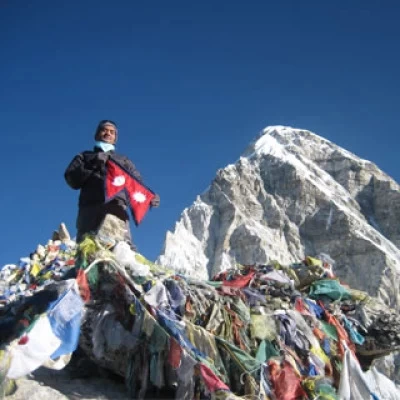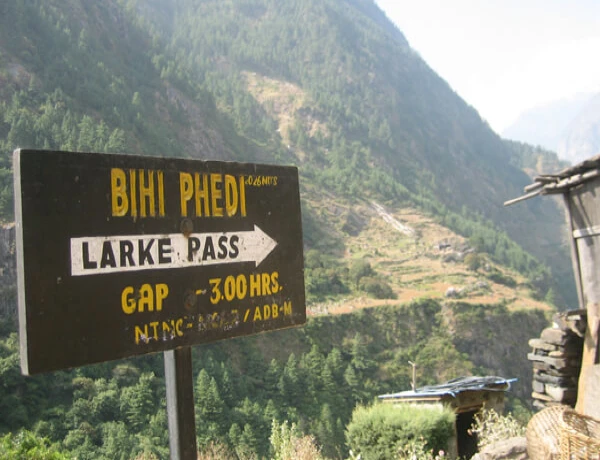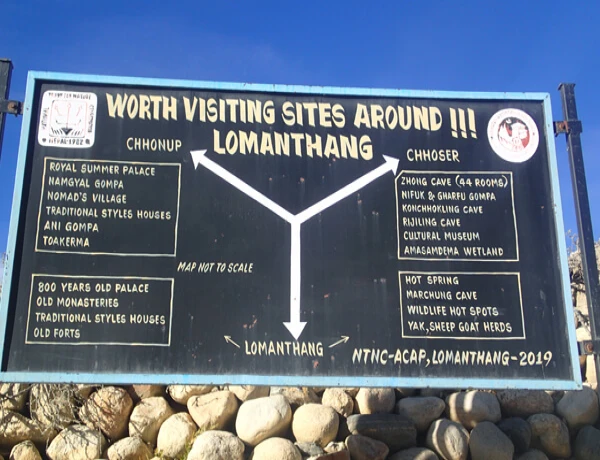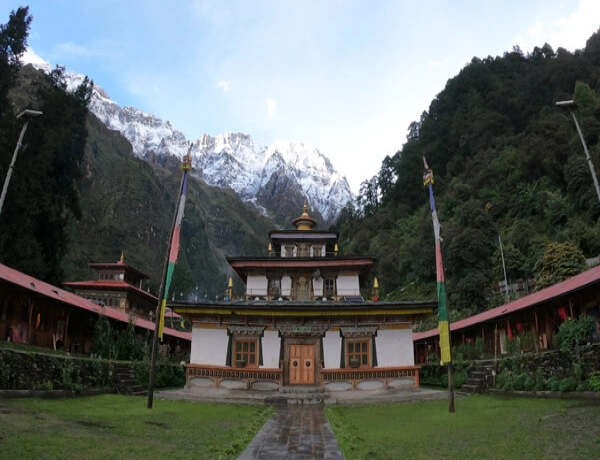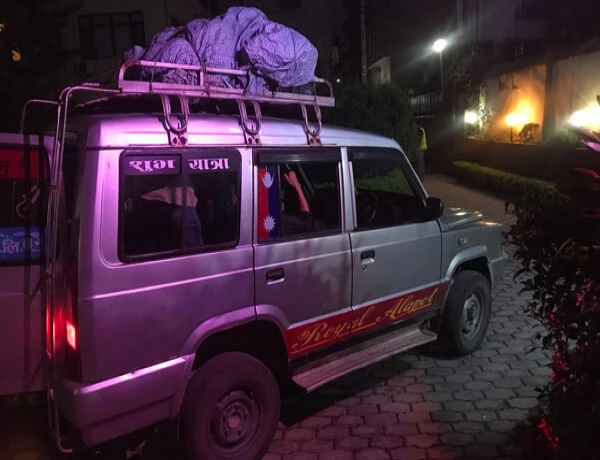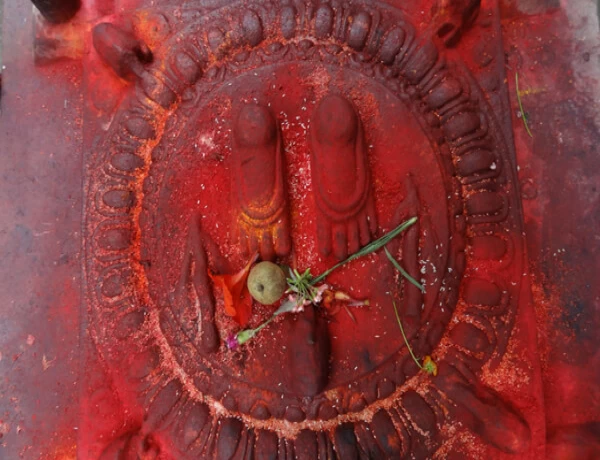Ready to take on the challenge? Lukla to Everest Base Camp Trek ultimate guide for 2024–2025 will help you prepare for every twist and turn on the path to Everest Base Camp.
Beginner's Guide to the Trek from Lukla to Everest Base Camp
Are you dreaming of reaching Everest? The trek from Lukla to Everest Base Camp (EBC) is one of the most iconic adventures for hikers and mountaineers worldwide. Starting from the small town of Lukla at an altitude of 2,860 meters, trekkers embark on a journey that promises awe-inspiring views and formidable challenges.
Everest's allure isn't just in its height. The trek takes you through Sherpa villages, lush forests, and above the tree line into stark, glacial landscapes. Each step brings unmatched scenery, from the stunning Khumbu Icefall to the towering peaks of Lhotse and Nuptse.
But it's not all beauty and grandeur. The trek is tough. Altitude sickness, changing weather conditions, and rugged paths test your physical and mental limits. Yet, this very difficulty is part of its charm, drawing more and more trekkers every year. Here we give a guide to the trek from Lukla to Everest Base Camp for beginner hikers.
Overview of the Lukla to Everest Base Camp Trek.
The trek from Lukla to Everest Base Camp is more than just a journey; it is a life-changing experience. Every step through this rugged terrain reveals a story full of history, breathtaking views, and the spirit of mountaineering.
Brief History and Significance
The trek to Everest Base Camp has a fascinating history. It became famous after Sir Edmund Hillary and Tenzing Norgay's historic summit of Mount Everest on May 29, 1953. Since then, thousands of adventurers have followed, making the trek one of the world's most famous. This route is not only essential for those aiming to scale Everest, but it also holds a key place in the heart of the mountaineering community. The path is steeped in Sherpa culture, providing a peek into the lives of the people who have long called this harsh yet beautiful landscape their home.

Geographical Highlights
The geographical features of the trek are nothing short of spectacular.
- Lukla: The adventure begins here, in a small town inhabited mostly by Sherpa with a famous short-run airport.Lukla is the main entrance gate near Sagarmatha National Park and the most popular Everest trek route. Witness every Thursday market at Lukla.
- Namche Bazaar: The naturally blessed Sherp’s hometown, Namche Bazaar, is known as the gateway to Everest. This bustling town offers shops, teahouses, and stunning views of the surrounding peaks. If you are here on a Saturday, take a look around the Saturday Market, where people are also using the batter system to revitalize the traditional market.
- Tengboche Monastery: This sacred site offers spiritual solace and panoramic views of Mount Everest, Ama Dablam, and other majestic peaks. Tengboche offers the best views of the Himalayan scenery at sunset and sunrise.
- Khumbu Glacier and Icefall: As you ascend, the landscape transforms into a glacial wonder, highlighted by the imposing and breathtaking Khumbu Icefall. Khumbu Glacier is more than 15 kilometers long, stretching from Khumbu Icefall to Thukla Pass.
- Kala Patthar is well-known for providing the best views of Everest without actually climbing it. Kalapathar (5,556 m) is a difficult two-hour climb from Gorakshep; however, the sunrise and sunset views from here are breathtaking. Each landmark along the way enhances the sense of accomplishment and wonder, making the journey unforgettable. The best view is of Mt. Everest, the Khumbu Glacier, and the Khumbu Icefall.
- Everest Base Camp is the starting point for climbers attempting to summit the world's highest peak, Mt. Everest (8,848.86 meters). It is a challenging but rewarding trek through the Himalayas, with an elevation of 5,360 meters. It takes 2 to 3 hours to walk from Gorakshep to the edge of the Khumbu Glacier, with thin air, cold temperatures, and rough terrain, but the breathtaking views and sense of accomplishment make it all worthwhile. Despite the inability to view Mount Everest from the Everest Base Camp,
Who Should Attempt This Trek?
It is important to recognize that this journey is not for everyone. It takes a high level of physical fitness and some trekking experience, but you do not have to be a super athlete.
Fitness levels and experience:
- Physical fitness requires regular cardio exercises like running, swimming, yoga, Zumba dancing, and cycling. Strength training is also useful.
- Trekking Experience: Prior experience with multi-day treks at high altitudes is preferred but not required.
Targeted audience:
- Adventurers: those who enjoy nature and are looking for a challenge.
- Photographers and nature enthusiasts: The scenic beauty and unique landscape provide numerous photographic opportunities.
- Cultural explorers include anyone interested in learning about Sherpa culture and Himalayan traditions.
- To cut costs, because your Everest Base Camp trek begins in Lukla, you will save a significant amount of money on transportation from Kathmandu to Luka and back to KTM for your guide and porter. The guide and porter will meet you in Lukla to begin your Everest trek.
In conclusion, if you are in good shape, have a sense of adventure, and are willing to face some physical and mental challenges, the Lukla to Everest Base Camp trek could be your next big adventure.
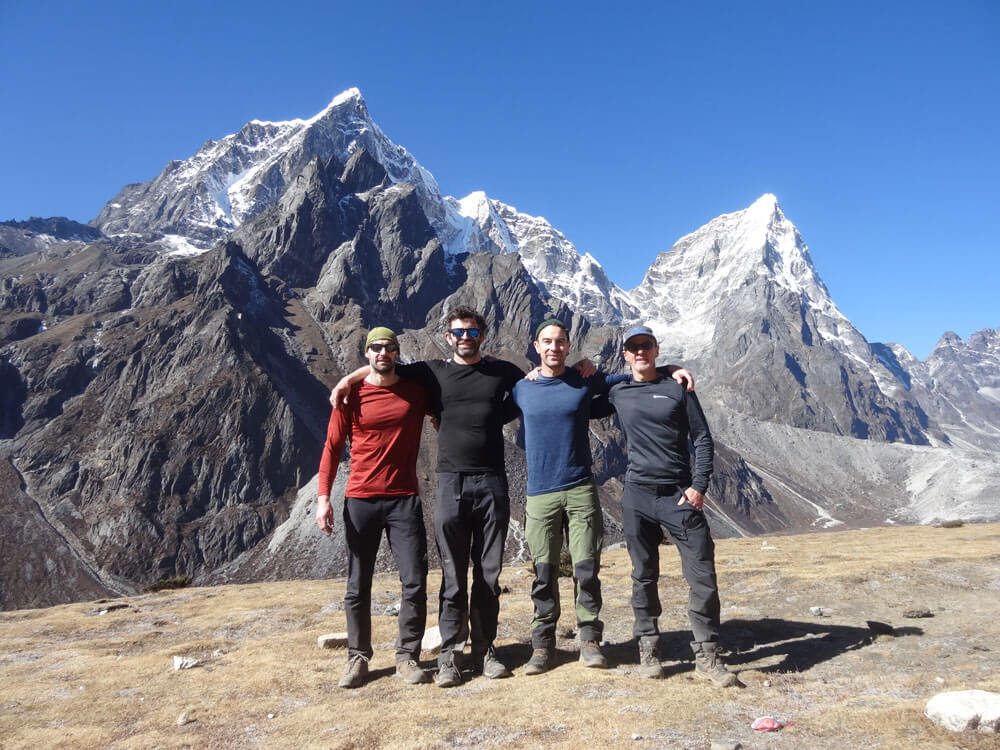
Prepare for the trek.
Planning a trek from Lukla to Everest Base Camp entails more than just purchasing tickets and packing bags. It is about preparing your body, getting the right equipment, and taking health precautions seriously. Let us break down what you need to do.
physical training and fitness
To complete the EBC trek, you must be in good shape. Your body must be prepared to handle the adventure in the Himalayas, as this is not an easy task. Begin your training at least three to six months before your trip.
Recommended exercises:
- Cardio workouts, such as running, swimming, and cycling, help build endurance. Aim for 30 to 45 minutes, five days a week.
- Join Jumba Dance or practice regular yoga three to six months before your departure. This increases your physical and mental focus, allowing you to achieve your goals with greater determination.
- Hiking Practice: Go for hikes with a backpack. This simulates the actual journey. Start with shorter and less steep trails, gradually increasing the difficulty.
- Strength Training: Focus on your legs, core, and upper body. Squats, lunges, and planks are excellent choices. Lift weights or use resistance bands.
- Stair Climbing: If you don't have hills nearby, climb stairs. It simulates the constant uphill and downhill paths of the trek.
- Remember that it is more than just building muscle. You must build stamina and resilience.
Gear and Equipment
Having the right equipment is critical. It is critical for your comfort and safety. So, select the appropriate trekking gear and pack it for your Everest Base Camp trek. Here's everything you need:
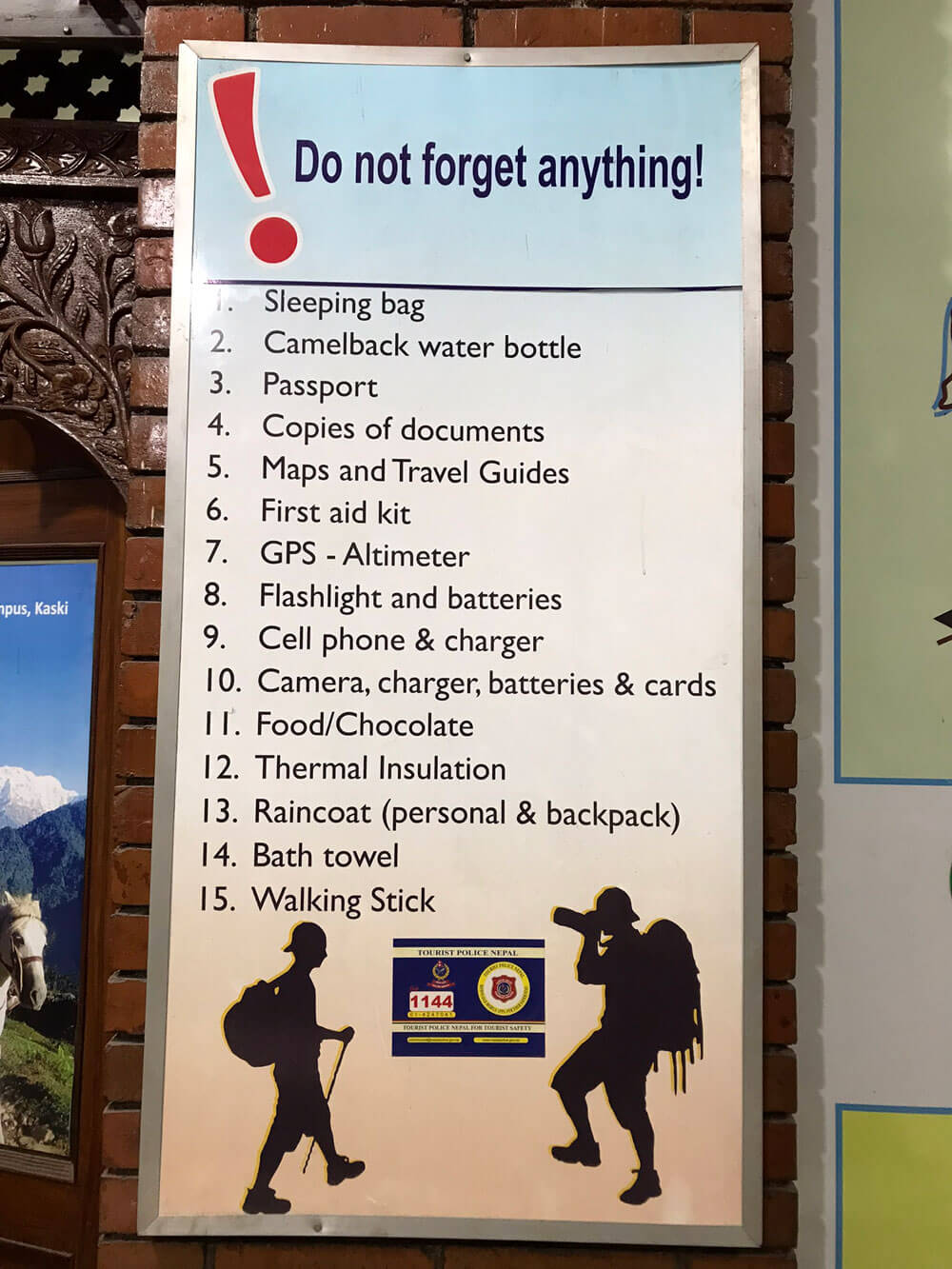
Clothing:
- Base layers include moisture-wicking shirts and pants.
- Insulating layers include fleece jackets or down jackets.
- Outer layers include waterproof and windproof jackets and pants.
- Hiking boots are durable, waterproof, and provide good ankle support.
Other essentials:
- Backpack: A strong backpack with a capacity of 40-60 liters and a small day bag of 20-30 liters.
- The sleeping bag is rated for temperatures as low as -20°C (-4°F).
- Trekking poles can help reduce knee strain and improve balance.
- Headlamp: for early morning or late evening hikes.
- Water Purification: Use tablets or a purification system to ensure that your drinking water is clean.
- A first aid kit should include bandages, antiseptics, pain relievers, and any personal medications.
- Sunglasses and sunscreen: Protect against the intense UV rays at high altitudes.
Packing light but smartly can significantly improve your trekking experience.
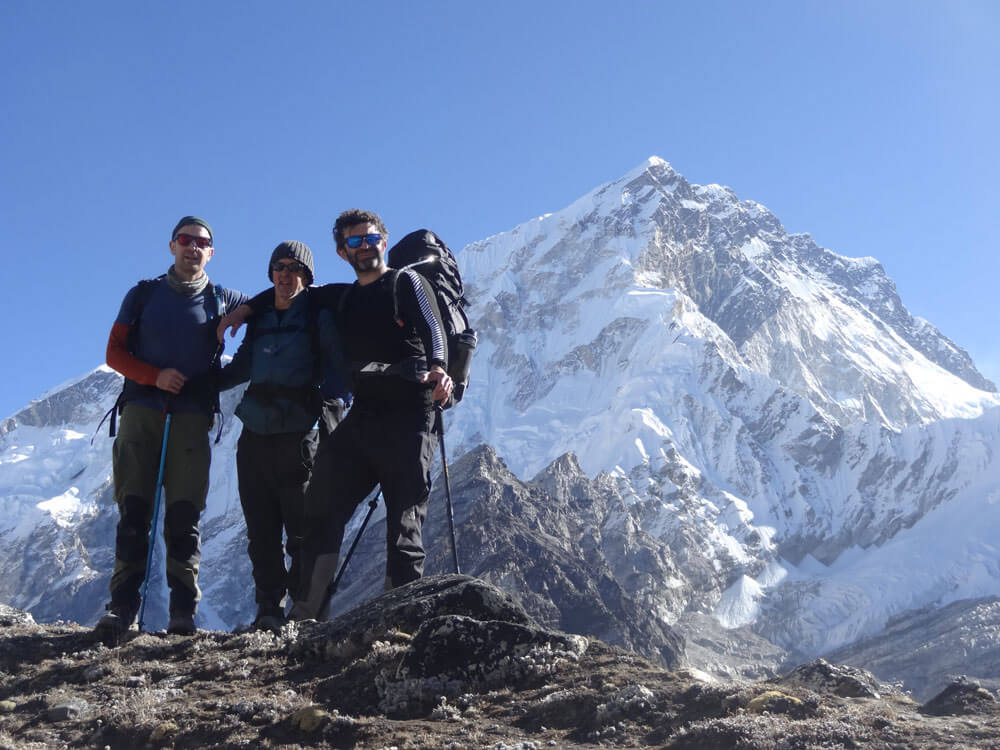
Acclimatization and Health Precautions
Altitude sickness is a serious concern during the Everest Base Camp trek. Acclimatization is essential for prevention. This entails gradually adjusting to the higher altitude.
Tips for Acclimatizing:
- Take it slowly. Do not rush. Your body requires time to adjust. Apply the "climb high, sleep low" rule.
- Hydrate: Drink a lot of water. Dehydration can worsen altitude sickness.
- Avoid drinking and smoking. These can raise the risk of altitude sickness.
- Medication: Consult your doctor about medications like Diamox, which can help prevent altitude sickness.
Health Precautions:
- Regular checkups: Get a medical checkup before your trek. Ensure you have no underlying health issues.
- Vaccinations: Stay updated on necessary vaccinations.
- Hygiene: Carry hand sanitizers and wet wipes. Avoid drinking untreated water.
Trekkers often fear altitude sickness, but they can significantly reduce the risks with proper acclimatization and health precautions.
With the proper fitness regimen, gear, and health precautions, you are one step closer to completing the trek to Everest Base Camp. It is a difficult journey, but with proper preparation, it is a rewarding and memorable adventure.
Tea House Accommodation along the Everest Base Camp Trek Route:
The trek to Everest Base Camp is the most popular teahouse trek in the world. You will sleep overnight in teahouses and eat at the same teahouses. Every village along the EBC trek route, from Lukla to Everest Base Camp, has accommodations ranging from basic lodges to the most luxurious hotels. The most popular villages, such as Lukla, Phakding, Namche Bazaar, Tengboche, Dingboche, Lobuche, and Gorakshep, can get tea houses. Private rooms for two people typically include a double or twin bed, a shared bathroom, and a toilet. Some places, like Gorak Shep and Lobuche, have dormitory-style accommodations as well. The majority of them are basic tea houses, but some are also very luxurious hotels. Lukla, Phakding, Namche Bazaar, Dibuche, and Lobuche all have luxury hotels with private bathrooms and upscale amenities. If you want to go on a luxury Everest base camp trek, there are luxury hotels in the high Himalayas.

Walking Distance From Lukla to Everest Base Camp
Lukla is about 38.5 miles (62 kilometers) from Everest Base Camp. Depending on speed and acclimatization, the journey usually lasts 10–14 days. The journey begins in Lukla, at 2,860 meters (9,383 feet), and continues through high altitude, Sherpa villages, and lush forests before arriving at Everest Base Camp, at 5,364 meters (17,598 feet). Though the path requires meticulous preparation due to the difficult terrain and elevation, it offers breathtaking views of the Himalayas, including peaks such as Ama Dablam, Lhotse, and Mt. Everest itself. Every day, you should walk for 5 to 6 hours.
Here is a detailed itinerary for your trek from Lukla to Everest Base Camp.
The trek from Lukla to Everest Base Camp offers breathtaking scenery and cultural experiences. Here's a detailed itinerary to help you plan each day of your adventure.
Day 1: Arrival in Lukla, trek to Phakding.
The adventure begins with a thrilling flight from Kathmandu to Lukla, which takes approximately 30 minutes. The crisp mountain air greets you as you land on one of the world's most thrilling runways.
Once in Lukla, you will begin your journey to Phakding. The trail is well-marked and leads through picturesque Sherpa villages. You will cross several suspension bridges adorned with prayer flags, adding to the trek's mystical ambiance. The journey to Phakding is relatively short, lasting approximately 3–4 hours and providing a gentle introduction to the terrain.
Day two: Phakding to Namche Bazaar.
The second day is more challenging and rewarding as you make your way from Phakding to Namche Bazaar. The trek takes approximately 6–7 hours and features some steep ascents. One of the trek's highlights is the stunning view of Thamserku Peak.
You'll also cross the famous Hillary Suspension Bridge, which provides breathtaking views of the Dudh Koshi River far below. You will see this bustling market town nestled among the peaks as you get closer to Namche Bazaar. Namche Bazaar is the gateway to the high Himalayas and a crucial acclimatization point.
Day 3: Acclimatization Day in Namche Bazaar
Spending a day in Namche Bazaar is essential for acclimatization. This helps your body adjust to the altitude and reduces the risk of altitude sickness.
You can take short hikes around the area, such as the trek to the Everest View Hotel and Khumjung Village, which offers panoramic views of Everest and other peaks. Another must-visit is the Sherpa Culture Museum, which provides insights into the local culture and history. Relax, explore the local shops, and soak in the incredible mountain views.
Day 4: Namche Bazaar to Tengboche
On day four, the trek from Namche Bazaar to Tengboche begins. This segment takes about 5–6 hours and offers a blend of ascents and descents. One of the day's highlights is the first glimpse of the Everest summit if the weather is clear.
The trail passes through lush rhododendron forests, and as you ascend, the tree line starts to thin out. The day culminates with a visit to the Tengboche Monastery, one of the most famous in the region. The monastery's tranquil ambiance, coupled with its stunning backdrop of mountains, makes it a spiritual haven.
Day 5: Tengboche to Dingboche
Leaving Tengboche, the path to Dingboche takes around 5–6 hours. As you trek higher, you'll notice a change in scenery. The lush forests give way to more alpine conditions, and the air becomes thinner.
You'll pass through the village of Pangboche and cross several small streams. The trail continues to ascend steadily, and by the time you reach Dingboche, you'll be at an altitude of 4,410 meters. Dingboche is known for its stunning views of Ama Dablam and the expansive Imja Valley.
Day 6: Acclimatization Day in Dingboche
A second acclimatization day in Dingboche is crucial. This allows your body to handle the increasing altitude.
Use this day to explore the surrounding areas. A popular short hike is up to Nangkartshang Peak, 5083 m, offering mesmerizing views of Cho Oyu, Makalu, Lhotse, and other peaks. It's a steep climb but worth the effort for the spectacular vistas. Rest, hydrate, and enjoy the tranquility of this high-altitude village.
Day 7: Dingboche to Lobuche
The trek from Dingboche to Lobuche spans about 4–5 hours. This leg of the journey introduces you to the stark, high-altitude landscape. The path is dotted with memorials for climbers who lost their lives on Everest, a poignant reminder of the mountain's majesty and danger.
As you trek, the landscape turns more rugged, with glaciers visible in the distance. The trail is relatively moderate but becomes steeper as you approach Lobuche. Once there, you're rewarded with close-up views of the mighty Khumbu Glacier.
Day 8: Lobuche to Gorak Shep and Everest Base Camp
This is one of the most thrilling days of the trek. Starting early from Lobuche, you'll head towards Gorak Shep, which takes about 3–4 hours. After a brief rest, the final push to Everest Base Camp begins.
The trek to Base Camp takes approximately 2–3 hours each way. The terrain is rugged and glacial, offering awe-inspiring views of the Khumbu Icefall. Reaching Everest Base Camp is a monumental achievement—a moment to soak in the surroundings and snap plenty of photos. After spending time at Base Camp, you'll return to Gorak Shep for the night.
Day 9: Return Journey from Gorak Shep to Pheriche
Starting early, you will trek back to Pheriche, which takes around 6-7 hours. Descending is quicker but still demanding due to the rocky paths and altitude change.
The journey takes you back through Lobuche and continues down to the lower elevation of Pheriche. The village of Pheriche is a well-known acclimatization stop for climbers heading to higher peaks. It offers a more relaxed atmosphere and some excellent lodges for a good night's rest.
Day 10: Trek from Pheriche to Namche Bazaar.
This trek takes approximately 7-8 hours. Enjoy the bustling ambiance of Namche once more.
Day 11: Trek from Namche Bazaar to Lukla.
This final leg takes about 7-8 hours. Once in Lukla, you can celebrate the completion of your trek and reminisce about the incredible journey you've undertaken.
Day 00: Fly back to Kathmandu and enjoy the rest of the day.
Fly back to Kathmandu in the morning for 25 minutes.
Day 00: Then final departure to your destination.
Each day's trek brings you closer to recapturing the joys and challenges of the journey, making the return just as memorable.

Cultural Experiences and Local Interactions
The trek from Lukla to Everest Base Camp is more than just breathtaking scenery and physical challenges. It's also a chance to immerse you in the rich culture and traditions of the local communities. Along the way, you'll engage with the warm-hearted Sherpas, visit ancient monasteries, Chortens, and Buddhist sacred mantra carvings in rock, and taste delicious local cuisine.
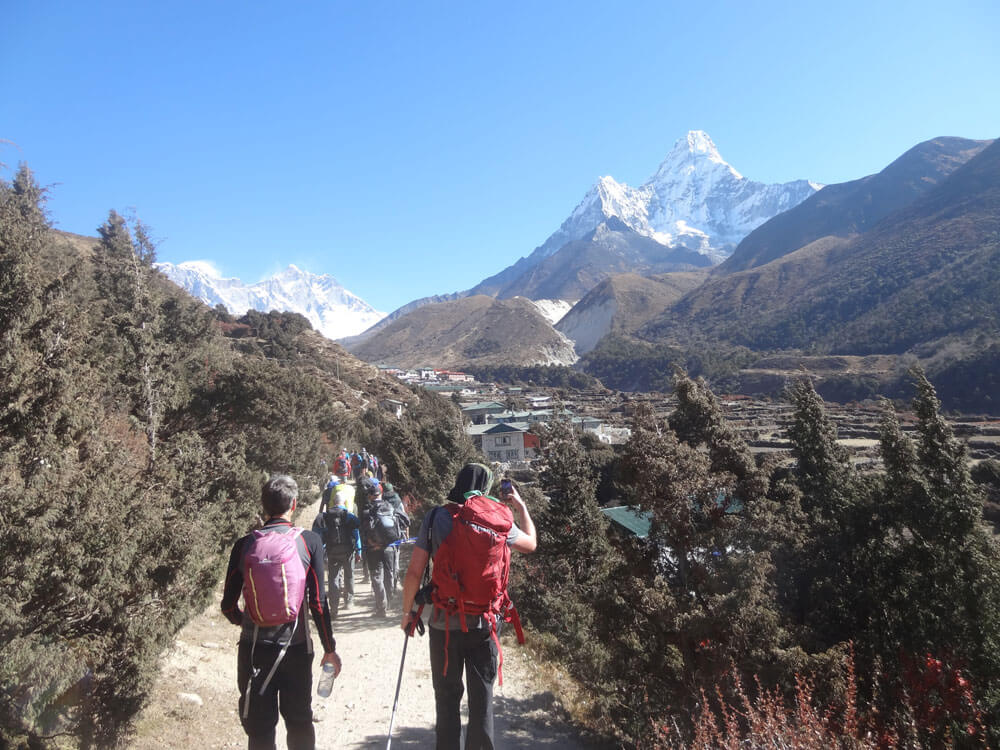
Sherpa Culture and Hospitality
The Sherpa community is the backbone of the Everest region. Known for their mountaineering skills, they are also incredibly warm and welcoming.
- Warm Welcomes: As you pass through Sherpa villages, you'll be greeted with smiles and friendly nods. The Sherpa are known for their hospitality, making you feel at home even in the remotest parts of the trail.
- Cultural Exchange: Spend evenings in tea houses run by Sherpa families. This is a great opportunity to learn about their traditions, stories, and way of life. Many Sherpas enjoy sharing tales of their experiences on the mountains, providing a unique insight into what it's like to grow up in this rugged landscape.
- Prayer Flags and Mani Stones: Along the path, you'll see colorful prayer flags fluttering in the wind and intricately carved Mani stones. The five colors represent the five basic elements of the universe: yellow: earth, green: water, red: fire, white: air, and blue: space. These are important cultural symbols that hold spiritual significance. They represent peace, compassion, and the interconnectedness of all living things.
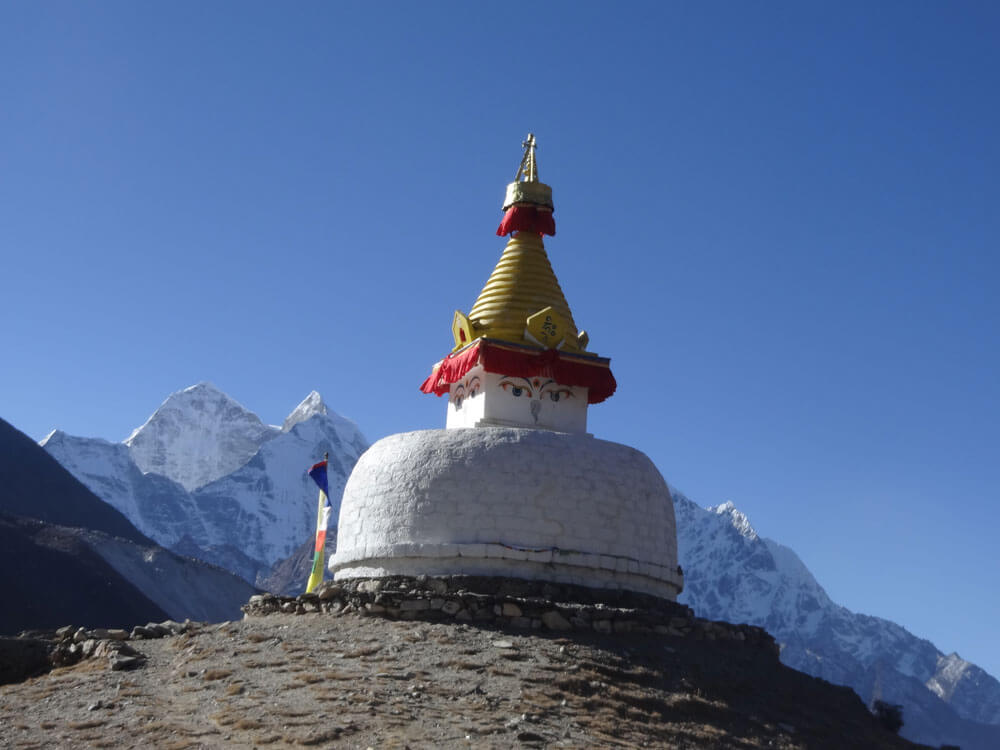
Visiting Monasteries
The Everest region is dotted with monasteries that add a spiritual dimension to the trek. Visiting these monasteries offers a peaceful respite from physical exertion.
- Tengboche Monastery: This is the most famous monastery on the trek. Located in the village of Tengboche, it offers breathtaking views of Everest, Ama Dablam, and other peaks. The monastery is a center for Tibetan Buddhism and hosts colorful festivals, adding to the cultural richness of your trek. You may participate in the praying ceremony every morning and evening in the gumba. Lama Sangwa Dorje introduced Buddhism in the Khumbu Region and established the oldest monasteries at Pangboche and Tengboche (1916). The footprint of Lama Sangwa Dorje can be seen while visiting the Tengbuche Monastery.
- Pangboche Monastery: Another significant stop, this monastery is believed to be the oldest in the region. It holds historical artifacts and ancient scriptures, giving trekkers a glimpse into the religious heritage of the Himalayas. The Yeti finger was stolen from the Pangboche monastery in 1958 and smuggled by actor James Stewart, and the complete hand was stolen in the early 1990s. The Buddhist monk of the Pangboche name, Lama Sangwa Dorje, used to meditate in the cave. While he meditated, a mysterious creature, Yeti, revered him, bringing him food, water, and fuel, and finally became his disciple. Afterward, the Yeti died. Sangwa Lama collected the hand and scalp of the Yeti and took them back to the monastery, where they remained as sacred relics, occasionally paraded around the village as a fertility ceremony, until they were found in the current age.
- Deboche Nunnery: A short hike down from Tengboche, about 25 to 30 minutes, this nunnery is home to Buddhist nuns who live and practice their faith here. Visiting the nunnery provides a different perspective on the monastic life and adds to the spiritual journey of the trek.
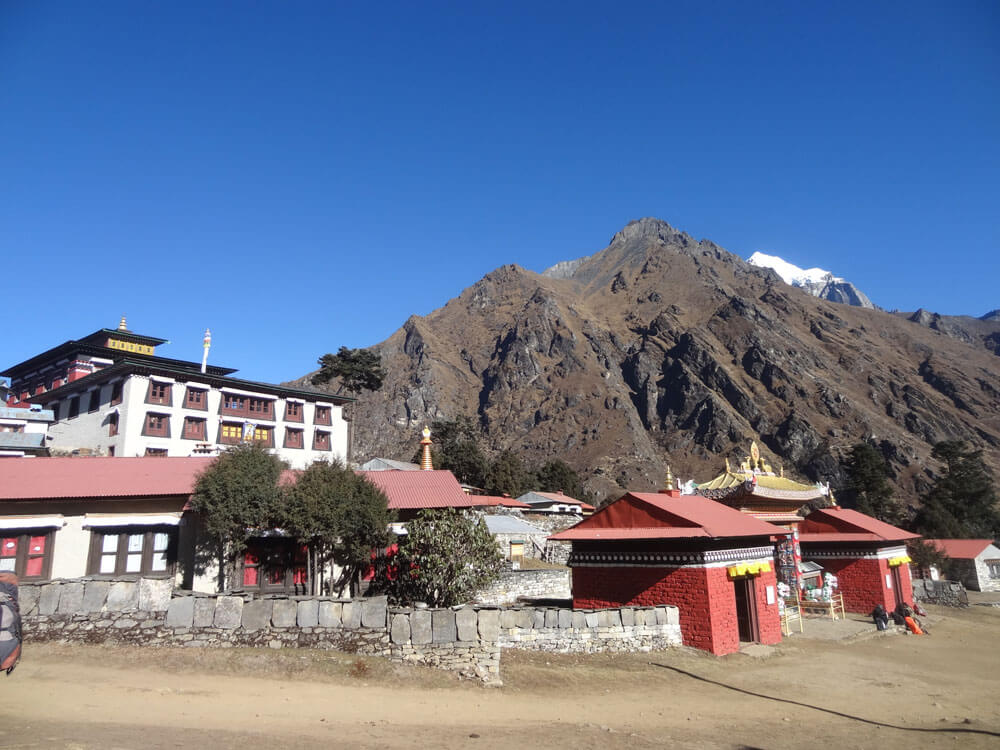
Local Cuisine
Sampling the local food and beverages is an essential part of the Everest Base Camp trek. The cuisine is simple, hearty, and perfect for the cold and high-altitude environment.
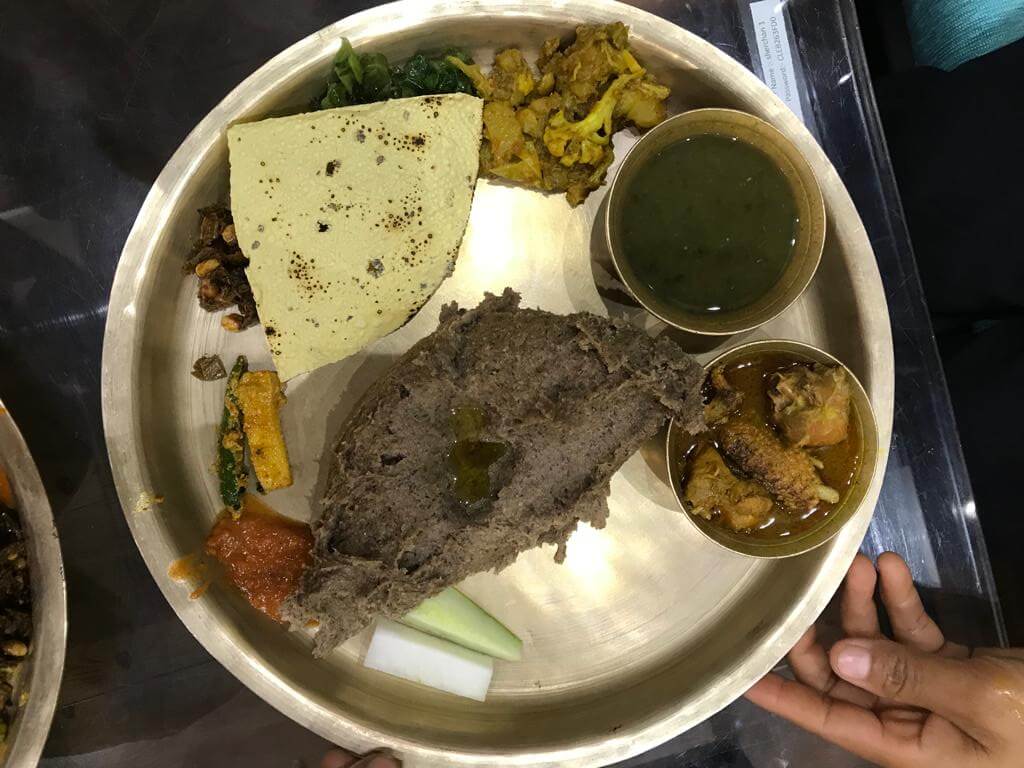
- Dal Bhat: This is the staple food in Nepal, consisting of lentil soup served with rice, pickles, and vegetable curries. It's nutritious and provides the energy needed for long trekking days. Dal Bhat power, 24-hour power—as the locals say! You can get it more than once, whenever your stomach is not full, at the same price.
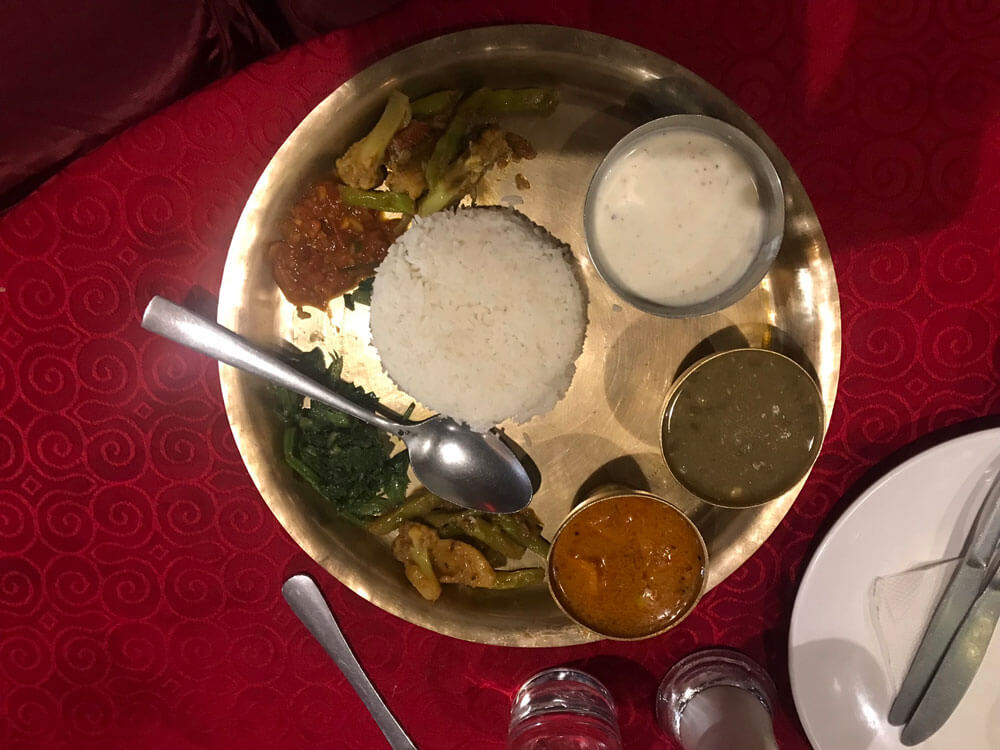
- Momo: These Tibetan-style dumplings are a treat. They can be filled with vegetables, meat, or cheese and are often served with a spicy dipping sauce.
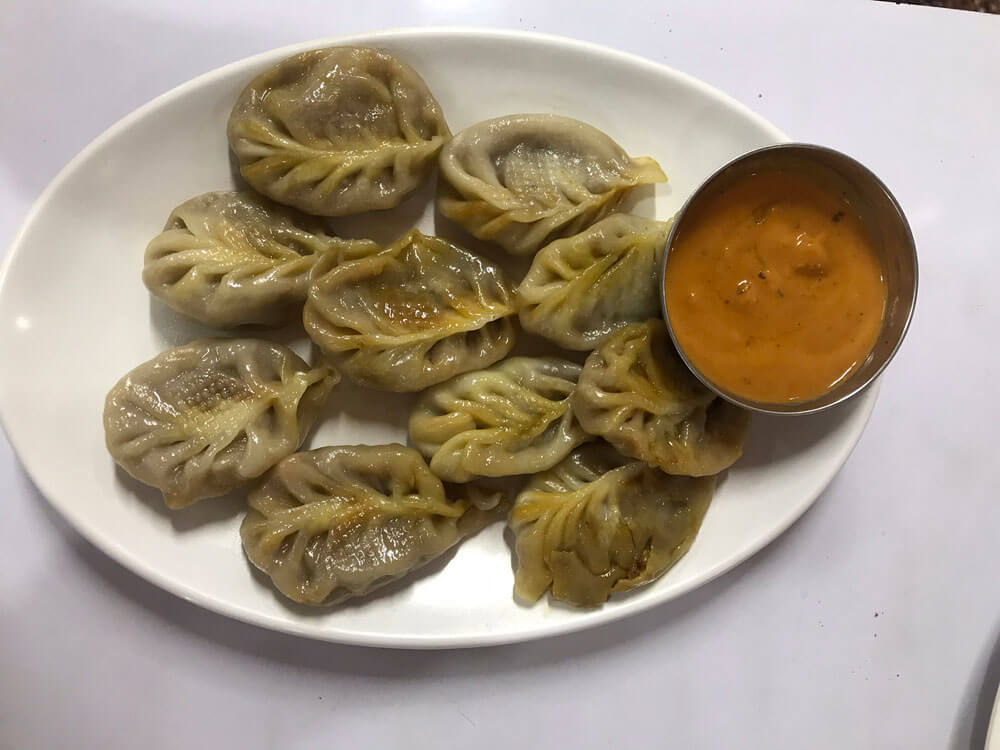
- Yak Cheese: Made from the milk of yaks (Nak female yak), this cheese is rich and flavorful. Yaks are grazing on the precious herbs of the high Himalayas, so you can be amazed at how nutritious the yak milk is. It's a common ingredient in local dishes and makes for a tasty snack.
- Butter Tea: A traditional Tibetan drink, it's made from tea leaves, yak butter, barley flour (Champ), and salt. While its taste might be an acquired one for some, it's excellent for staying warm and hydrated at high altitudes.
- Chang: This is a local alcoholic beverage made from barley, wheat, corn, and rice. While it's not advisable to consume much alcohol at high altitudes due to the risk of dehydration, tasting a small amount of Chang can be part of the cultural experience. The taste is similar to wine but with a higher alcohol amount.
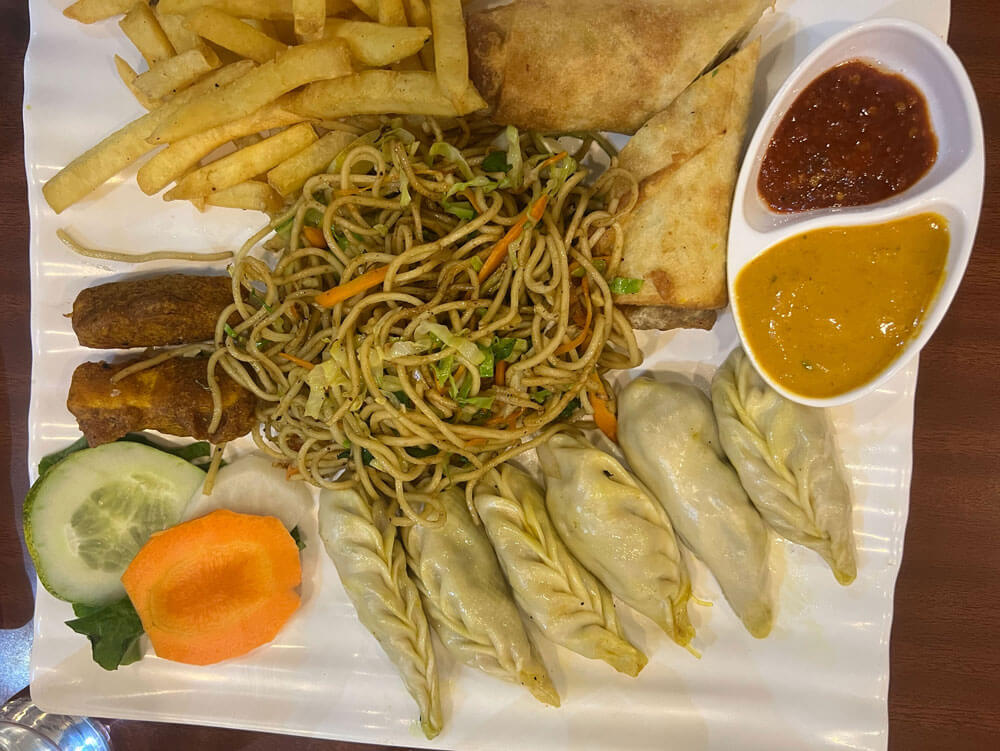
The trek from Lukla to Everest Base Camp offers more than just a physical challenge; it's a journey rich in cultural experiences and human connections. From the legendary hospitality of the Sherpa people to the spiritual serenity of ancient monasteries and the comforting warmth of local cuisine, each element enriches your adventure in the Himalayas.
Challenges and How to Overcome Them
Trekking from Lukla to Everest Base Camp is an exhilarating adventure. However, it comes with its own set of challenges. Understanding these challenges and preparing for them can make your journey smoother and more enjoyable.
Dealing with Altitude Sickness
Altitude sickness is a common problem trekkers face at high elevations. Knowing how to recognize and manage it is crucial.
Signs and Symptoms:
- Headache: A throbbing headache is one of the first signs.
- Nausea and Vomiting: Feeling sick to your stomach or even throwing up.
- Dizziness: feeling lightheaded or unsteady.
- Fatigue: 20–30 Extreme tiredness, even after resting.
- Shortness of Breath: Struggling to breathe, especially while walking.
Prevention and Management:
- Acclimatize Properly: Give your body time to adjust to the altitude by ascending slowly. Take rest days at higher elevations above three thousand meters.
- Stay Hydrated: Drink plenty of water and any fluid. Avoid alcohol and caffeine, as they can dehydrate you.
- Eat Light: Opt for easy-to-digest foods like soups and fruits.
- Medications: Consult your doctor about taking Diamox on the knees (acetazolamide), which can help prevent altitude sickness.
- Listen to your intuition. If you feel symptoms, don't ascend further. Rest and allow your body to acclimatize. If symptoms worsen, descend immediately. Descending is the best way to recover from the high altitude.
Weather and Terrain Challenges
The weather in the Himalayas can be very unpredictable. Combine that with difficult terrain, and you need to be prepared for a variety of conditions.
Weather Conditions:
- Cold Temperatures: It's common to experience freezing temperatures, especially at night. Bring warm clothing layers.
- Sudden Weather Changes: Be prepared for sudden rain, snow, or wind. Carry waterproof gear and warm clothes.
- Intense Sunlight: The UV radiation is stronger at high altitudes. Use sunscreen and wear sunglasses.
Terrain Challenges:
- Steep Ascents and Descents: The trail is often steep and rocky. Good hiking boots with ankle support and light speed. Trousers are essential.
- Narrow Paths and Suspension Bridges: Some parts of the trail can be narrow or feature suspension bridges that might be scary. Cross them carefully, and don't rush. Always climb sideways while alcohol passes the yaks, smoke, mules, and check other trekkers.
- Be Careful While Taking Pictures: Capturing pictures on the journey is not only fun; it is a collection of your house experiences and a mirror of your life. While taking the photographs, you must be careful not to go to the edge of the trail, which is a dangerous spot. One mistake can cause people to end their lives.
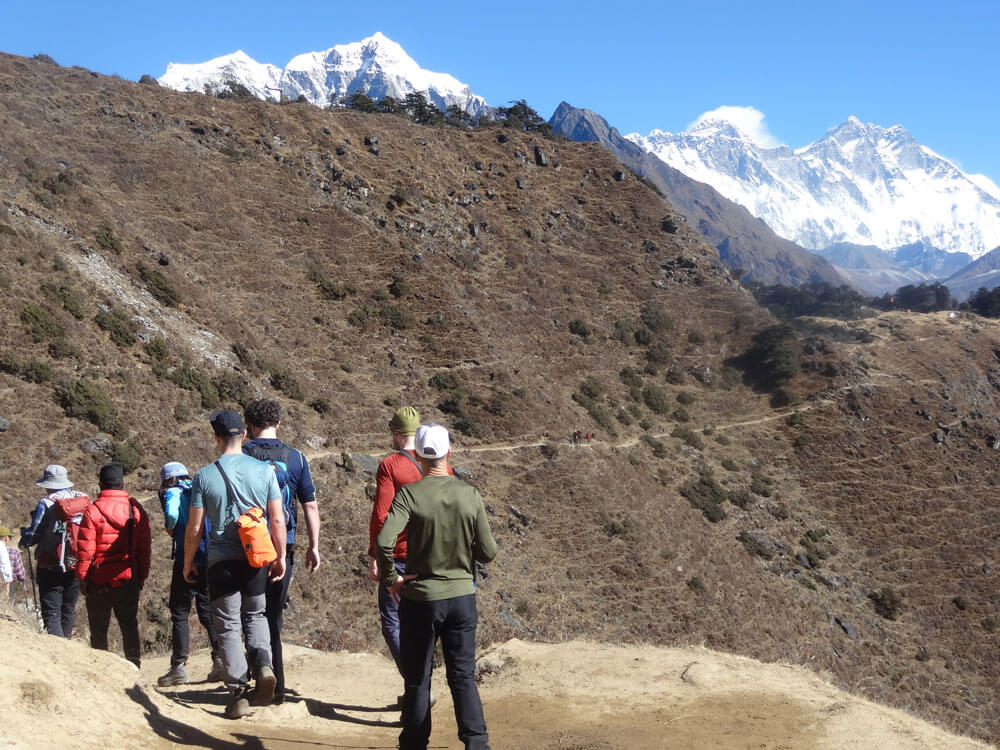
Preparation Tips:
- Layer Your Clothing: Dress in layers to easily adjust to changing temperatures. Start with a moisture-wicking base layer, add insulating layers, and finish with a waterproof outer layer.
- Practice Hiking: Train on uneven and steep terrain with double terrain. Get used to carrying a backpack.
- Gear Check: Make sure all your equipment, especially your boots and clothing, is in good condition and well-suited for cold, wet, and windy conditions. You may find essential trekking beds and gear by searching on Google or AI.
Mental and Emotional Preparation
Mental stamina is just as important as physical fitness when trekking to Everest Base Camp. Being prepared mentally and emotionally can make a big difference.
Staying Motivated:
Set the bathroom with realistic toilet expectations: Understand that the trek is tough and there will be challenging days. Be mentally prepared for ups and downs.
Stay Positive: Focus on the beauty around you and the progress you make each day. Celebrate small victories.
Connect with places and fellow trekkers: Share your experiences and support each other. Building camaraderie can provide emotional support.
Mental preparation and tips:
- Visualize Success: Imagine reaching Everest Base Camp. Visualize the scenery of your target destination, the sense of accomplishment, and the joy you'll feel.
- Mindfulness and Meditation: Practice mindfulness to stay present and appreciate each moment. Meditation can help manage stress and improve your mental resilience.
- Break It Down: Tackle the trek one day at a time. Focusing on smaller, manageable sections can make the overall journey less overwhelming.
Emotional Resilience:
- Reflect on your good reasons: Remember why you decided on this tea house. Whether it's for personal growth, adventure, or the thrill of the challenge, keep your motivations in mind.
- Embrace the Experience: Accept the discomfort and challenges as part of the journey. Each hurdle you overcome makes the accomplishment even sweeter. Accept the proverb “no pain, no gain."
- Understanding these challenges and preparing accordingly can transform your EBC trek from a daunting task into a rewarding, unforgettable adventure.

Conclusion
The trek from Lukla to Everest Base Camp is more than an adventure; it's a transformative journey. You'll face rugged terrain, unpredictable weather, and altitude challenges, yet the rewards are immense. Spectacular views, cultural experiences, and personal triumphs await you at every turn.
This trek isn't just about reaching a destination; it's about the stories you'll create and the memories you'll cherish for a lifetime. Whether you're an adventure lover, a nature enthusiast, or someone seeking a monumental challenge, this trek promises to fulfill and surpass your expectations.
You can hire a guide and porter from Lukla to minimize the cost of your Everest Base Camp Trek.
So, lace up your boots, pack your gear, and embark on the journey to Everest Base Camp. The mountains are calling, and they offer an experience you'll never forget.

